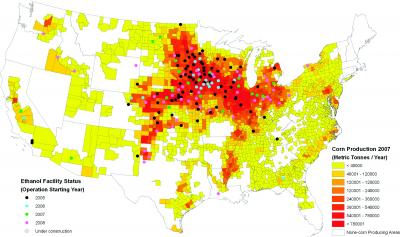Apr 13 2009
At a time when water supplies are scarce in many areas of the United States, scientists in Minnesota are reporting that production of bioethanol — often regarded as the clean-burning energy source of the future — may consume up to three times more water than previously thought. Their study is scheduled for the April 15 issue of ACS' Environmental Science & Technology, a semi-monthly publication.
 Bioethanol could consume more water than previously thought, scientists report. Credit: The American Chemical Society
Bioethanol could consume more water than previously thought, scientists report. Credit: The American Chemical Society
Sangwon Suh and colleagues point out in the new study that annual bioethanol production in the U.S. is currently about 9 billion gallons and note that experts expect it to increase in the near future. The growing demand for bioethanol, particularly corn-based ethanol, has sparked significant concerns among researchers about its impact on water availability. Previous studies estimated that a gallon of corn-based bioethanol requires the use of 263 to 784 gallons of water from the farm to the fuel pump. But these estimates failed to account for widely varied regional irrigation practices, the scientists say.
The scientists made a new estimate of bioethanol's impact on the water supply using detailed irrigation data from 41 states. They found that bioethanol's water requirements can be as high as 861 billion gallons of water from the corn field to the fuel pump in 2007. And a gallon of ethanol may require up to over 2,100 gallons of water from farm to fuel pump, depending on the regional irrigation practice in growing corn. However, a dozen states in the Corn Belt consume less than 100 gallons of water per gallon of ethanol, making them better suited for ethanol production. "The results highlight the need to take regional specifics into account when implementing biofuel mandates," the article notes.